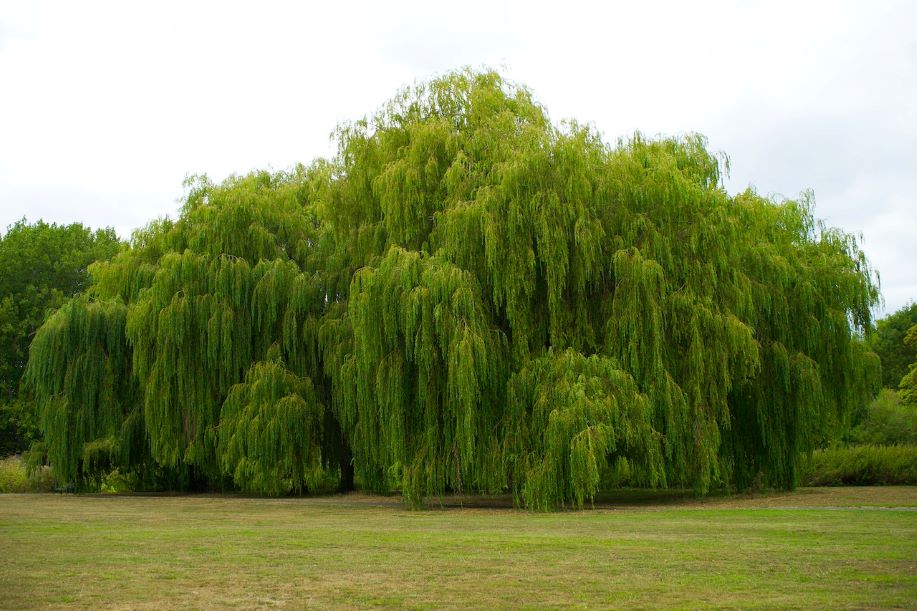High-maintenance Tree Species
By Evelyn Long

One of the best ways to transform a piece of land is to plant trees. Some tree species, however, can be more challenging than others to maintain. Some may require constant attention when they bloom, while others may endanger properties with their aggressive root systems. Eight tree species landscapers should avoid are as follows:
1. Willows
Weeping willows can turn into beautiful trees, but they are invasive. They’re originally from China, but many people have planted them in the United States, especially in the eastern half. Willows typically grow near bodies of water because they need a lot of water to grow.
Their aggressive roots can damage sewers and plumbing systems if the trees are close enough. Because they’re shallow, the roots often cause bumps in the grass, making lawn care difficult for landscaping professionals.
2. Fruit-bearing trees
Fruit trees can be a great addition to any yard or garden. They provide free food once the tree bears fruit and contribute to a greener, more sustainable environment. People may find them rewarding once they successfully grow — but fruit trees can be high maintenance.
All kinds of trees can attract bugs, and fruit trees aren’t an exception. Another level of maintenance is that property owners must pick the fruit to prevent the food from spoiling around the three. While careful long-term pruning and nurturing can make fruit trees a beautiful part of a landscape, homeowners be warned — it’s going to take some work.
3. Strangler fig
This tropical tree species is more commonly found in humid climates, such as parts of the Southeastern United States. As its name suggests, strangler figs have roots that grow downward into the soil and wrap around the tree already present. These roots can smother the host tree.
Strangler figs can spread out quite far in forests and landscapes. Once the strangler fig produces fruit, raccoons and birds will eat them. The animals will then spread the seeds around the area and start the growing process again.
These plants are actually native to the United States and have many ecological benefits, but strangler figs can destroy pipes if landscapers don’t keep an eye on them. Thankfully, they tend not to mind needed trimmings and pruning, so careful maintenance can keep everyone happy.
4. Silver maple
Silver maple trees are native to the central and eastern parts of the United States, and can grow to look beautiful. However, these trees can develop fast and become a nuisance to the environment.
A primary problem of the silver maple tree is its invasive root system, which is notorious for breaking sidewalks and damaging sewer systems. These trees are unable to weather storms as well as others, leading to broken branches that landscapers must pick up afterward.
5. Eucalyptus
Eucalyptus trees are native to Australia and Southeast Asia, including Papua New Guinea, Indonesia and the Philippines. Some states – such as Arizona, California and Hawaii – can also grow eucalyptus trees. People have used them for firewood, fuel, erosion control and more.
The downfall of eucalyptus trees is landscapers must prune them often because they grow quickly. Pruning in the summer is a necessity to control the tree’s height. Also, eucalyptus trees lose branches and bark easily, causing a mess. If one of these trees becomes heavy at the top, the limbs can break and become dangerous to anything underneath.
6. Bradford pear
Bradford pear trees are native to parts of China and Vietnam, and grow in the United States. Their white blooms are gorgeous, but the downsides of this tree make them a nuisance.
These trees are notorious for their foul smell, causing some to compare the odor to that of a rotting fish. The tree uses the scent to attract pollinators such as flies and beetles. Bradford pear trees make matters worse by being an invasive species and their weak branches make them a liability when wind-heavy storms arrive.
7. Sweet gum
Landscapers can find sweet gum trees in the southeast United States, parts of Mexico and Central America. Their leaves change to beautiful scarlet colors in the fall, symbolizing the autumn season’s arrival.
However, sweet gum trees require frequent maintenance because of their seed pods. These have sharp spikes, causing pain to anyone who steps on them with their bare feet.
8. Sycamore
Sycamore trees grow in the eastern half of the United States, some parts of southern Canada and northern Mexico. These trees are massive, growing close to or more than 100 feet tall and 80 feet wide.
Issues arrive with its aggressive root system and the amount of shedding with its leaves and bark. They’re also susceptible to quite a few diseases, which can cause problems if the tree dies and becomes a danger during a storm. Sycamores also host pests like aphids and borers.
Trees can be a beautiful addition to any landscape and reach majestic heights when given time to grow. Their aesthetic and environmental benefits make them popular for landscapers in all regions of the United States and the world.
However, some trees can be problematic. Aggressive root systems can wreak havoc on other trees in the area and sidewalks, while cleanup needs and disease can turn a yard into a mess. Landscapers should avoid planting these eight trees because of their high maintenance levels.
Evelyn Long is a writer and editor focused on home building and construction. She is the co-founder of Renovated, a web magazine for the home industry.


